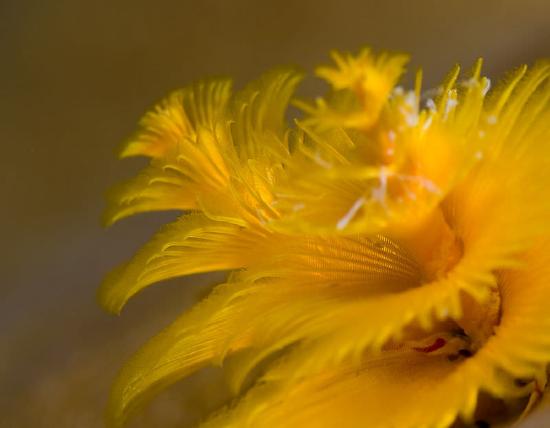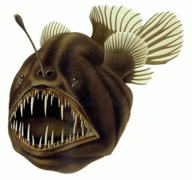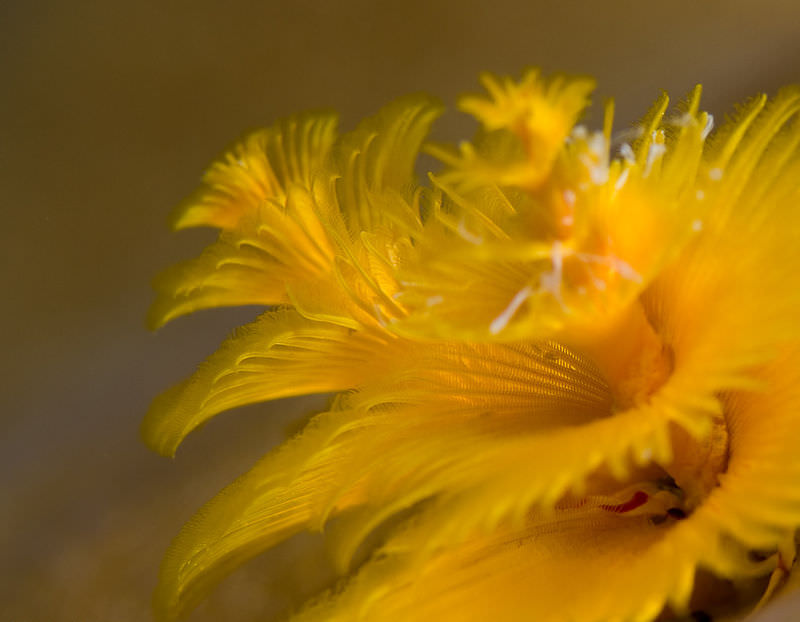6.3: Aquatic Organisms
- Page ID
- 12131
\( \newcommand{\vecs}[1]{\overset { \scriptstyle \rightharpoonup} {\mathbf{#1}} } \)
\( \newcommand{\vecd}[1]{\overset{-\!-\!\rightharpoonup}{\vphantom{a}\smash {#1}}} \)
\( \newcommand{\dsum}{\displaystyle\sum\limits} \)
\( \newcommand{\dint}{\displaystyle\int\limits} \)
\( \newcommand{\dlim}{\displaystyle\lim\limits} \)
\( \newcommand{\id}{\mathrm{id}}\) \( \newcommand{\Span}{\mathrm{span}}\)
( \newcommand{\kernel}{\mathrm{null}\,}\) \( \newcommand{\range}{\mathrm{range}\,}\)
\( \newcommand{\RealPart}{\mathrm{Re}}\) \( \newcommand{\ImaginaryPart}{\mathrm{Im}}\)
\( \newcommand{\Argument}{\mathrm{Arg}}\) \( \newcommand{\norm}[1]{\| #1 \|}\)
\( \newcommand{\inner}[2]{\langle #1, #2 \rangle}\)
\( \newcommand{\Span}{\mathrm{span}}\)
\( \newcommand{\id}{\mathrm{id}}\)
\( \newcommand{\Span}{\mathrm{span}}\)
\( \newcommand{\kernel}{\mathrm{null}\,}\)
\( \newcommand{\range}{\mathrm{range}\,}\)
\( \newcommand{\RealPart}{\mathrm{Re}}\)
\( \newcommand{\ImaginaryPart}{\mathrm{Im}}\)
\( \newcommand{\Argument}{\mathrm{Arg}}\)
\( \newcommand{\norm}[1]{\| #1 \|}\)
\( \newcommand{\inner}[2]{\langle #1, #2 \rangle}\)
\( \newcommand{\Span}{\mathrm{span}}\) \( \newcommand{\AA}{\unicode[.8,0]{x212B}}\)
\( \newcommand{\vectorA}[1]{\vec{#1}} % arrow\)
\( \newcommand{\vectorAt}[1]{\vec{\text{#1}}} % arrow\)
\( \newcommand{\vectorB}[1]{\overset { \scriptstyle \rightharpoonup} {\mathbf{#1}} } \)
\( \newcommand{\vectorC}[1]{\textbf{#1}} \)
\( \newcommand{\vectorD}[1]{\overrightarrow{#1}} \)
\( \newcommand{\vectorDt}[1]{\overrightarrow{\text{#1}}} \)
\( \newcommand{\vectE}[1]{\overset{-\!-\!\rightharpoonup}{\vphantom{a}\smash{\mathbf {#1}}}} \)
\( \newcommand{\vecs}[1]{\overset { \scriptstyle \rightharpoonup} {\mathbf{#1}} } \)
\( \newcommand{\vecd}[1]{\overset{-\!-\!\rightharpoonup}{\vphantom{a}\smash {#1}}} \)
\(\newcommand{\avec}{\mathbf a}\) \(\newcommand{\bvec}{\mathbf b}\) \(\newcommand{\cvec}{\mathbf c}\) \(\newcommand{\dvec}{\mathbf d}\) \(\newcommand{\dtil}{\widetilde{\mathbf d}}\) \(\newcommand{\evec}{\mathbf e}\) \(\newcommand{\fvec}{\mathbf f}\) \(\newcommand{\nvec}{\mathbf n}\) \(\newcommand{\pvec}{\mathbf p}\) \(\newcommand{\qvec}{\mathbf q}\) \(\newcommand{\svec}{\mathbf s}\) \(\newcommand{\tvec}{\mathbf t}\) \(\newcommand{\uvec}{\mathbf u}\) \(\newcommand{\vvec}{\mathbf v}\) \(\newcommand{\wvec}{\mathbf w}\) \(\newcommand{\xvec}{\mathbf x}\) \(\newcommand{\yvec}{\mathbf y}\) \(\newcommand{\zvec}{\mathbf z}\) \(\newcommand{\rvec}{\mathbf r}\) \(\newcommand{\mvec}{\mathbf m}\) \(\newcommand{\zerovec}{\mathbf 0}\) \(\newcommand{\onevec}{\mathbf 1}\) \(\newcommand{\real}{\mathbb R}\) \(\newcommand{\twovec}[2]{\left[\begin{array}{r}#1 \\ #2 \end{array}\right]}\) \(\newcommand{\ctwovec}[2]{\left[\begin{array}{c}#1 \\ #2 \end{array}\right]}\) \(\newcommand{\threevec}[3]{\left[\begin{array}{r}#1 \\ #2 \\ #3 \end{array}\right]}\) \(\newcommand{\cthreevec}[3]{\left[\begin{array}{c}#1 \\ #2 \\ #3 \end{array}\right]}\) \(\newcommand{\fourvec}[4]{\left[\begin{array}{r}#1 \\ #2 \\ #3 \\ #4 \end{array}\right]}\) \(\newcommand{\cfourvec}[4]{\left[\begin{array}{c}#1 \\ #2 \\ #3 \\ #4 \end{array}\right]}\) \(\newcommand{\fivevec}[5]{\left[\begin{array}{r}#1 \\ #2 \\ #3 \\ #4 \\ #5 \\ \end{array}\right]}\) \(\newcommand{\cfivevec}[5]{\left[\begin{array}{c}#1 \\ #2 \\ #3 \\ #4 \\ #5 \\ \end{array}\right]}\) \(\newcommand{\mattwo}[4]{\left[\begin{array}{rr}#1 \amp #2 \\ #3 \amp #4 \\ \end{array}\right]}\) \(\newcommand{\laspan}[1]{\text{Span}\{#1\}}\) \(\newcommand{\bcal}{\cal B}\) \(\newcommand{\ccal}{\cal C}\) \(\newcommand{\scal}{\cal S}\) \(\newcommand{\wcal}{\cal W}\) \(\newcommand{\ecal}{\cal E}\) \(\newcommand{\coords}[2]{\left\{#1\right\}_{#2}}\) \(\newcommand{\gray}[1]{\color{gray}{#1}}\) \(\newcommand{\lgray}[1]{\color{lightgray}{#1}}\) \(\newcommand{\rank}{\operatorname{rank}}\) \(\newcommand{\row}{\text{Row}}\) \(\newcommand{\col}{\text{Col}}\) \(\renewcommand{\row}{\text{Row}}\) \(\newcommand{\nul}{\text{Nul}}\) \(\newcommand{\var}{\text{Var}}\) \(\newcommand{\corr}{\text{corr}}\) \(\newcommand{\len}[1]{\left|#1\right|}\) \(\newcommand{\bbar}{\overline{\bvec}}\) \(\newcommand{\bhat}{\widehat{\bvec}}\) \(\newcommand{\bperp}{\bvec^\perp}\) \(\newcommand{\xhat}{\widehat{\xvec}}\) \(\newcommand{\vhat}{\widehat{\vvec}}\) \(\newcommand{\uhat}{\widehat{\uvec}}\) \(\newcommand{\what}{\widehat{\wvec}}\) \(\newcommand{\Sighat}{\widehat{\Sigma}}\) \(\newcommand{\lt}{<}\) \(\newcommand{\gt}{>}\) \(\newcommand{\amp}{&}\) \(\definecolor{fillinmathshade}{gray}{0.9}\)
What is this? Plant or animal?
It is actually the Yellow Christmas tree worm. These animals are colorful, and can be red, orange, yellow, blue, and white. The Christmas tree worm lives on tropical coral reefs throughout the world. The Christmas tree worm's plumes are used for feeding and respiration. These worms use their plumes to catch plankton and other small particles passing in the water. Cilia then pass the food to the worm's mouth.
Aquatic Organisms
Aquatic organisms generally fall into three broad groups: plankton, nekton, and benthos. They vary in how they move and where they live.
- Plankton are tiny aquatic organisms that cannot move on their own. They live in the photic zone. They include phytoplankton and zooplankton. Phytoplankton are bacteria and algae that use sunlight to make food. Zooplankton are tiny animals that feed on phytoplankton.
- Nekton are aquatic animals that can move on their own by “swimming” through the water. They may live in the photic or aphotic zone. They feed on plankton or other nekton. Examples of nekton include fish and shrimp.
- Benthos are aquatic organisms that crawl in sediments at the bottom of a body of water. Many are decomposers. Benthos include sponges, clams, and anglerfish like the one in Figure below. How has this fish adapted to a life in the dark?
 Anglerfish. This anglerfish lives between 1000 and 4000 meters below sea level. No sunlight penetrates to this depth. The rod-like structure on its face has a glow-in-the-dark tip. It is covered with microorganisms that give off their own light. The fish wiggles the structure like a worm to attract prey. In the darkness, only the rod-like worm is visible.
Anglerfish. This anglerfish lives between 1000 and 4000 meters below sea level. No sunlight penetrates to this depth. The rod-like structure on its face has a glow-in-the-dark tip. It is covered with microorganisms that give off their own light. The fish wiggles the structure like a worm to attract prey. In the darkness, only the rod-like worm is visible.KQED: Studying Aquatic Animals
Oceans cover more than 70 percent of our planet, yet they are some of the least explored regions on Earth. Who better to unlock the mysteries of the ocean than marine animals themselves? Marine scientists have been tagging and tracking sharks, leatherback turtles, and other sea life to learn more about marine ecosystems. Through the Tagging of Pacific Predators program (TOPP), scientists hope to assess and explain the migration routes, ecosystems, and diversity of our oceans’ species.
Beginning in 2000, scientists from the National Oceanic and Atmospheric Administration, Stanford University, and the University of California, Santa Cruz combined to form TOPP. As part of TOPP, researchers attach satellite tags to elephant seals, white sharks, giant leatherback turtles, bluefin tuna, swordfish, and other marine animals. The tags collect information, such as how deep each animal dives, the levels of ambient light (to help determine an animal’s location), and interior and exterior body temperature. Some tags also collect information about the temperature, salinity, and depth of the water surrounding an animal to help scientists identify ocean currents. The tags send the data to a satellite, which in turn sends the data the scientists. They use this information to create maps of migration patterns and discover new information about different marine ecosystems. The information collected by TOPP offers rare insights into the lives of marine animals. Without TOPP, that information would otherwise remain unknown. With TOPP, scientists are developing a working knowledge of the particular migration routes animals take, as well as the locations of popular breeding grounds and the environmental dangers faced by different species. TOPP has shed light on how we can better protect the leatherback turtle and other endangered species.
Summary
- Aquatic organisms are either plankton, nekton, or benthos.
Review
- Compare plankton, nekton, and benthos.
- Give an example of plankton, nekton, and benthos.
- What are phytoplankton and zooplankton?
Resources
| Image | Reference | Attributions |
 |
[Figure 1] | License: CC BY-NC |
 |
[Figure 2] | Credit: August Brauer Source: commons.wikimedia.org/wiki/File:Humpback_anglerfish.png License: Public Domain |

